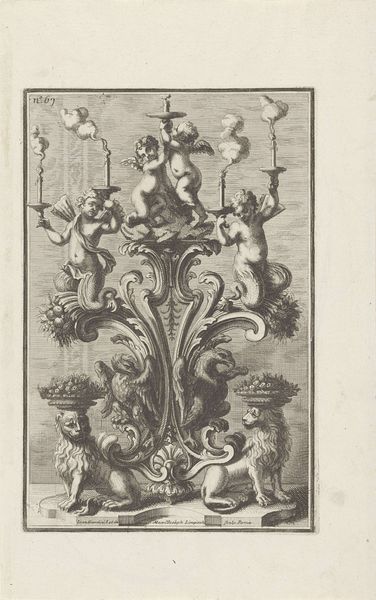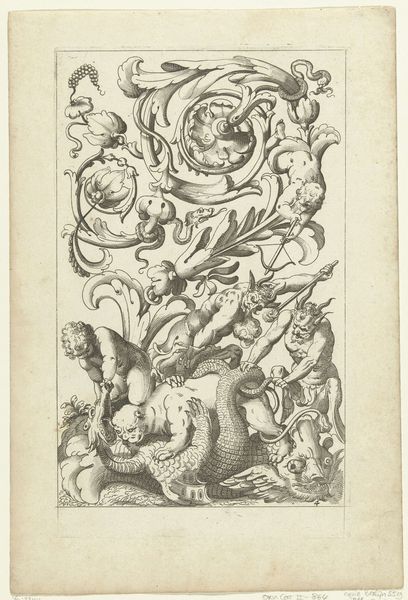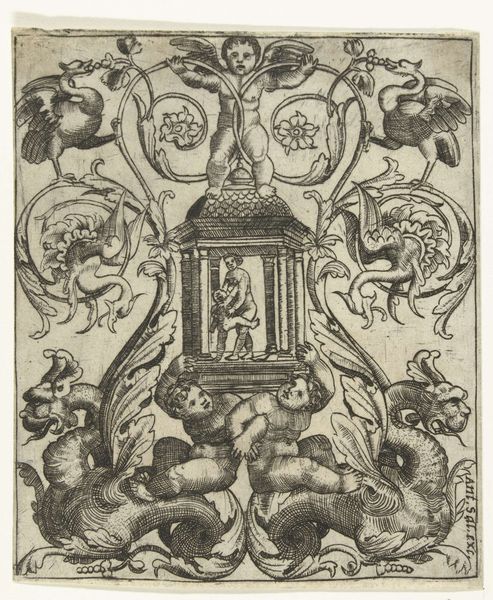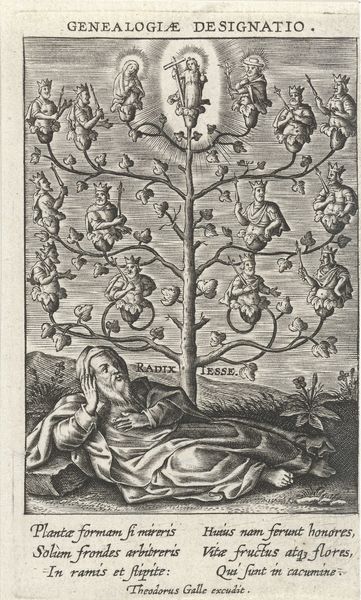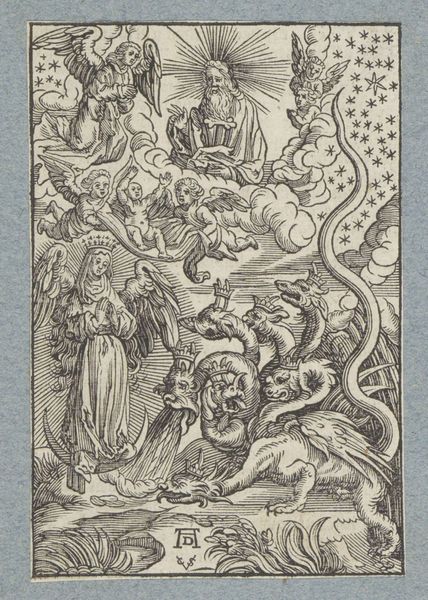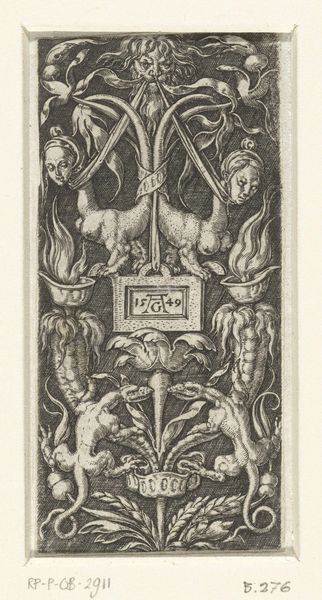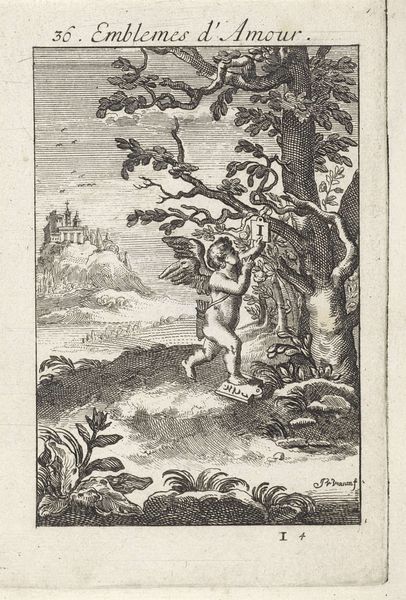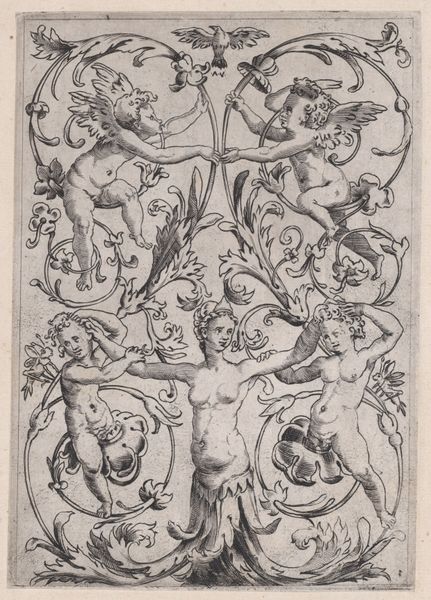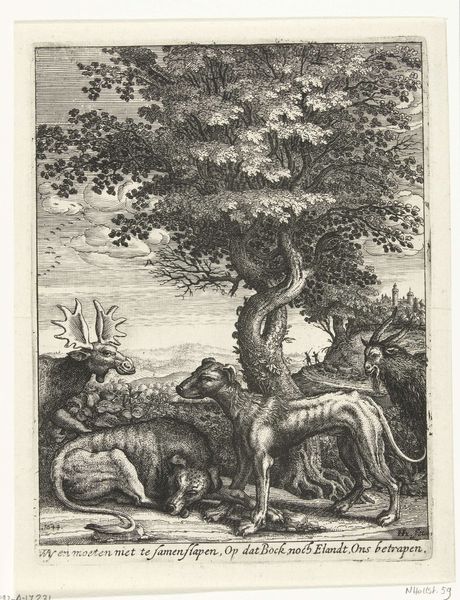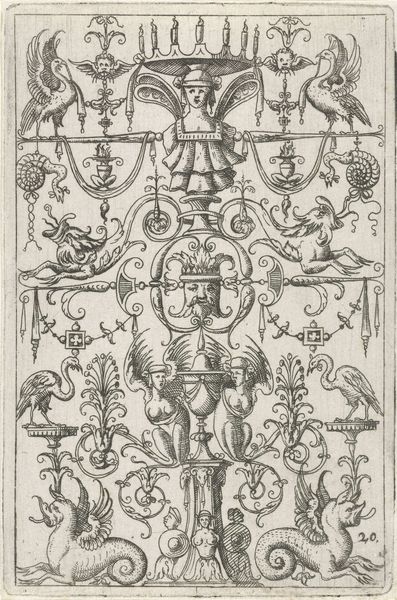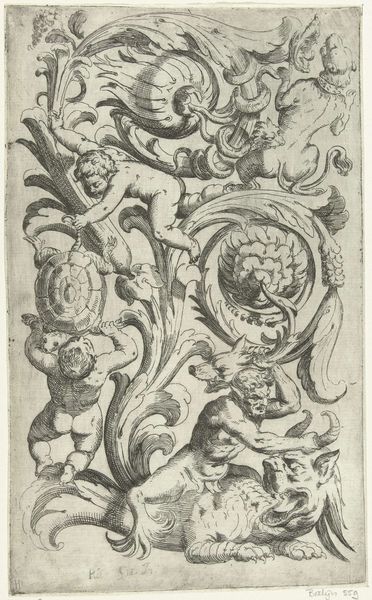
print, ink, engraving
#
ink drawing
# print
#
figuration
#
ink
#
history-painting
#
northern-renaissance
#
engraving
Dimensions: height 112 mm, width 76 mm
Copyright: Rijks Museum: Open Domain
Curator: This is "Tree of Jesse," an engraving from 1573, attributed to Wierix, and it is currently housed at the Rijksmuseum. Editor: My initial impression is one of intricate elegance. It's astonishing how much detail is packed into such a small space, using just ink. But the symbolism feels very formal. Curator: Well, the image certainly speaks to formal traditions. The "Tree of Jesse" is a common motif in Christian art, depicting the lineage of Jesus Christ through Jesse, the father of King David. The symbolic weight here connects to ideas of power, divine right, and heritage. Editor: Right, this is all about constructing a lineage to legitimize power. We see this "family tree" sprouting from Jesse, with each royal descendant depicted on the branches. I can’t help but consider how genealogy is used across cultures, often selectively, to solidify specific socio-political positions. Curator: Exactly. What's striking is how each figure, seated amidst stylized foliage, bears the symbolic trappings of kingship. And notice at the very top: the Virgin Mary with the Christ Child, crowning the whole ancestral narrative with its culmination in the Messiah. Editor: And let's acknowledge the historical context. This print was made during a period of intense religious conflict, during the early parts of the Dutch Revolt. Visual narratives such as this reinforced prevailing socio-political orthodoxies, especially concerning leadership. Curator: Absolutely. There’s a sense of continuity embedded in every line. Consider the radiating light, and the repeated motif of the Kingly sceptre: visual links signifying a God-ordained, unbroken chain. Editor: It’s fascinating how symbols that appear static can acquire such variable meanings across time, shifting with evolving political realities. Here, in 1573, it was designed to show an eternal lineage of power, which nowadays can feel oppressive when looking through a modern and feminist perspective. Curator: The artist invites us to remember stories, shared mythologies. It speaks volumes about humanity's need to find connections across generations. Editor: A crucial reflection when examining historical artifacts. I found the socio-historical angle compelling in trying to re-evaluate its role within ongoing and intersecting identity negotiations.
Comments
No comments
Be the first to comment and join the conversation on the ultimate creative platform.

